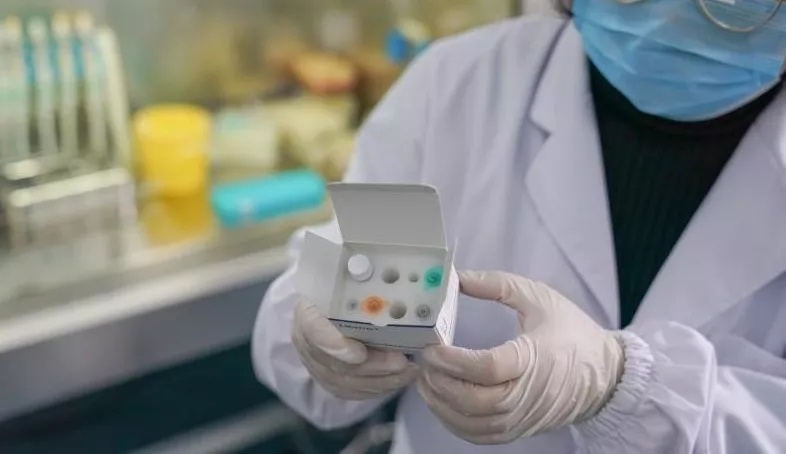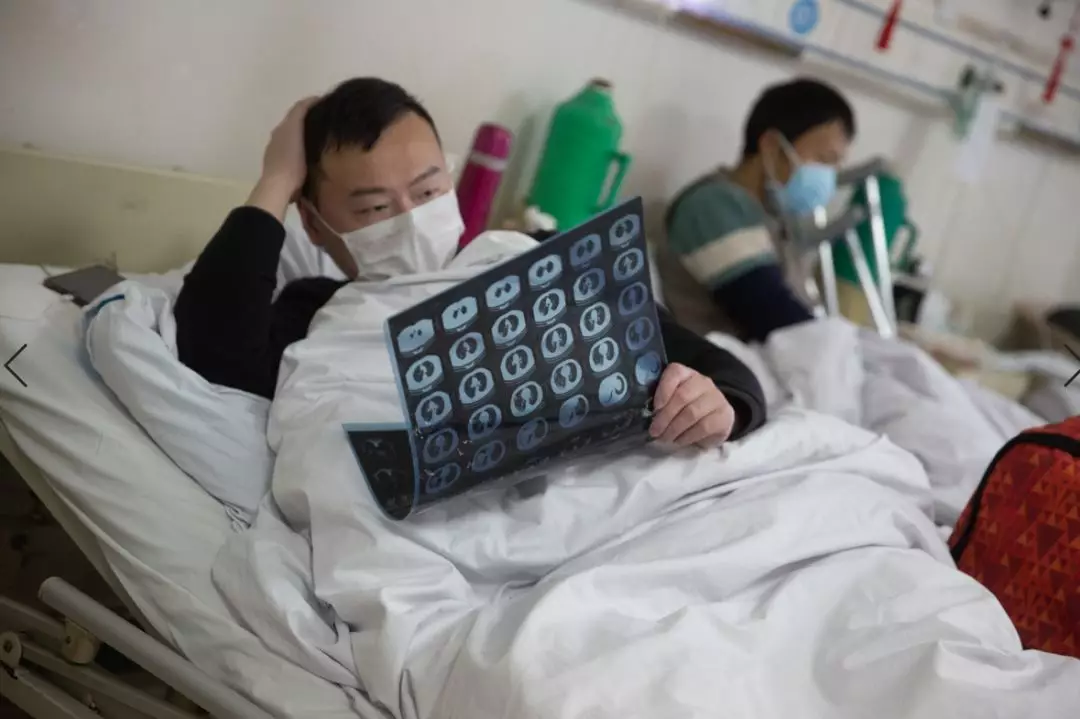Author: ZHANG Congzhi (Sanlian Lifeweek)
Translator: Marie Mao (COVID-19 Readings)
After the COVID-19 test kit shortage eased, real-time polymerase chain reaction (RT-PCR) testing, adopted as the main diagnostic criterion for COVID-19, again drew controversy. Some doctors who work on the front line of this outbreak found some patients tested negative in this test, but their condition continued to worsen, and their families also showed symptoms of infection. Besides RT-PCR testing, some experts had suggested that CT scans should also be included into the testing protocols of COVID-19. Is this feasible?
The appeal from experts had received a response from decision makers. The afternoon on February 5, National Health Commission of China released Diagnosis and Treatment Plan for Pneumonia of Novel Coronavirus (Trial Version 5), which stipulated that CT scans could be included for clinically diagnosed cases of COVID-19 (only in Hubei province).
Reporter: Zhang Congzhi, Wang Shan
Negative RT-PCR Test Result?
Almost a week after the first RT-PCR test, Wang Hui took his mother Wu Fang to the hospital for another RT-PCR test on February 3. Wu Fang was 70 years old. Her fever started on January 23. Her condition got worse after three days, showing symptoms such as shortness of breath, tiredness, and vomiting. Wang Hui drove his mother to the Wuhan No.8 Hospital immediately. Right after finishing the lung CT scan and before his mother having even left the CT machine, the doctor told him “you need to keep some distance from the patient”.
The CT scans showed that Wu Fang’s lungs were showing bilateral ground-glass opacity and were already infected. After receiving the lab report the doctors excluded influenza, bacterial infection, common cold and some others diseases with similar symptoms to COVID-19. “There’s only one possibility left (COVID-19)”, said the doctor. In order to get a diagnosis, Wang Hui took his mother for RT-PCR testing in Wuhan Union Hospital. The doctor prescribed RT-PCR test after reading Wu Fang’s CT scans and lab report. Wang Hui said that doctors told him RT-PCR tests were limited to patients with highly suspicious looking CT scans and blood test results. As his mother’s situation got worse and worse, his only hope was to get an affirmative RT-PCR test result so his mother could be hospitalized.

After throat swab sampling for Wu Fang, the lab staff told Wang Hui the test result would not be made available. If it’s positive he would be notified by phone in 24 to 48 hours. But a week after the first sampling, they had not received any form of notification. So they guessed the result of the test might be negative. But Wu Fang’s condition did not get better in the next few days. Wu Hui had to take his mother to get a RT-PCR test once again. By the time this article was published, it had been close to 48 hours since the sampling, and Wang Hui still had not received any results.
“I don’t know whether it was negative or positive or the result had a false negative problem”, said Wang Hui. “If it’s negative, shouldn’t we receive a written notice? With that, my mother can go outside rather than being isolated.”
There were quite some clinicians that shared similar confusion. Luo Fengming, professor and deputy director of Respiratory and Critical Care Department of Sichuan University Huaxi Hospital, is also the leader of the Sichuan medical team that was designated to assist Wuhan Red Cross Hospital. He told the reporter that “there are over 20 patients in our ward, according to my clinical experience, most of them are COVID-19 patients. But some patients that I thought were COVID-19 patients got negative RT-PCR test results.”
Luo Fengming thought there were two possibilities. One was that there were some problem with the sampling process and detection method, the other might be that the suspected patients had turned negative after medical treatment, and that it was the result of the treatment. “That’s why even after RT-PCR tests we still cannot be sure.” Luo Fengming also said that his current practice was to rely on his clinical experience and make decisions by comprehensively considering patients’ symptoms, medical history, plus imaging results and the test.
Is It Feasible to Include CT Scan Results into Diagnostic Criteria?
On February 3, a screenshot from Zhang Xiaochun, deputy director of the Radiology Department of Wuhan University Zhongnan Hospital, caused much debate about RT-PCR testing. Zhang Xiaochun appealed to her WeChat circle of friends, “do not blindly trust the RT-PCR test.” She highly recommended that we use CT scans as the main screening method of COVID-19, and at the same time, isolate those patients who show no symptoms or have had negative RT-PCR test results but show abnormalities in their lung CT scans.
Zhang Xiaochun’s judgment was based on her observations – there were more and more family clustered outbreaks in Wuhan, and many of the cases were hidden, with one or even multiple negative RT-PCR test results and showing no clinical symptoms. In later interviews she further explained that quite a few patients’ CT scans showed abnormalities, but the RT-PCR test results were negative, and they were allowed to go home. Several days afterwards, their condition got worse and the entire family were infected.

“The equipment for RT-PCR tests are not like the pregnancy test strips as in people’s imagination, which can be done by oneself with just a urine sample. Nucleic acid tests require a professional environment to sample, separate, and test, especially for infectious samples. It’s not that you can test just with the virus. You also need to separate and extract the nucleic acid of the virus. From sampling to separation and extraction, if you do not strictly follow the guidelines, there will likely be contamination and lead to inaccurate test results”, an unnamed expert told us. There are also technical limitations in RT-PCR tests, like the relative high rate of false positives. “Because COVID-19 is an RNA virus, it will degrade as the time passes. All these will affect the test accuracy.” She thought that RT-PCR tests put high technical demand on the laboratory’s environment and operators, so it shouldn’t be blindly expanded or to casually loosen the requirements.
Zhang Xiaochun said, the post on her WeChat was not about negating RT-PCR testing results, but given the reality of Wuhan, it was not possible to meet the needs of the large number of people using RT-PCR testing as the ultimate detection method because of the limitations in production and sampling method etc. “As an outbreak area, currently, Wuhan cannot fully rely on RT-PCR testing to screen patients to achieve the result of cutting off the sources of infection.”
We were told by a class III hospital doctor that nearly 300 people took CT scans everyday and most of the people showed lung abnormalities. “Some people could be diagnosed as having COVID-19, but currently our hospital only gets 100 RT-PCR test kits per day. We couldn’t guarantee that the patients who didn’t take RT-PCR tests were not infected.”
Zhang Yujiao, director of Stereotactic Ablative Radiotherapy Program, Department of Radiation Oncologyin University of Texas MD Anderson Cancer Center (UT MDA), also received a lot of requests for help regarding the COVID-19 diagnostic criteria from radiology doctors in China. Rather than responding immediately, he did some research on all publically available data related to the epidemic. According to his analysis, currently there probably still were not enough test kits, and the sensitivity was also an issue. False negatives did increase the difficulty of diagnosing for clinicians. “Now whether in Wuhan or the whole country the number of new cases keep rising. Form this perspective, I think we need a better way to cut off the spread of the epidemic.”

“Lots of hospitals have CT machines that can provide immediate results after scanning. It’s more practical to combine it with clinical observations to diagnose people.” Zhang YuJiao thought that now was the time to consider, without confirmation from RT-PCR tests, to use CT scans, patients’ clinical symptoms, such as fever, breathing difficulty etc, and patients’ contact and travel history as the main diagnostic criteria. So doctors can make quicker diagnosis. “Only in this way can we put an end to the problem of missing patients and effectively contain the epidemic .”
Meanwhile, Zhang Yujiao also mentioned, “There is also the possibility of misdiagnosis when relying on imaging to diagnose people without RT-PCR tests, because there are other viral pneumonia with symptoms and imaging manifestations partly overlapping with COVID-19. But that is okay even with the overlapping, because it is not wrong to isolate these patients with infectious diseases and provide them with supportive care.”
Zhang Xiaochun messaged us on February 5. The newly released Diagnosis and Treatment Plan for Pneumonia of Novel Coronavirus (Trial Version 5) from the National Health Commission treated “suspected cases with CT scans characteristic of the pneumonia as a diagnostic criteria for clinically diagnosed cases in the heavily hit Hubei”. This Treatment plan add a “clinically diagnosed case” besides the “suspected case” and “confirmed case”, and uses “suspected cases with CT scans characteristic of the pneumonia” as a diagnostic criteria (only in Hubei), which means CT scans have became a diagnostic criteria in “clinically diagnosed cases”.
(Wang Hui and Wu Fang are pseudonyms.)
Related Articles:
White Manual, Green Manual: Evolution of The COVID-19 Diagnostic Criteria 2020-02-20
Those Outside of The Statistics: They Died from Common Pneumonia? 2020-02-02